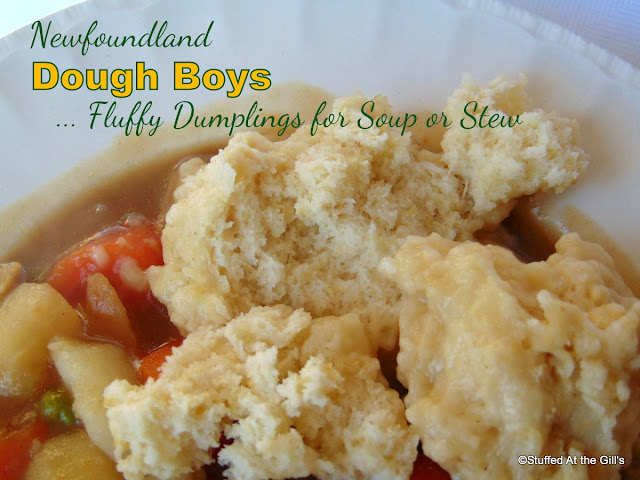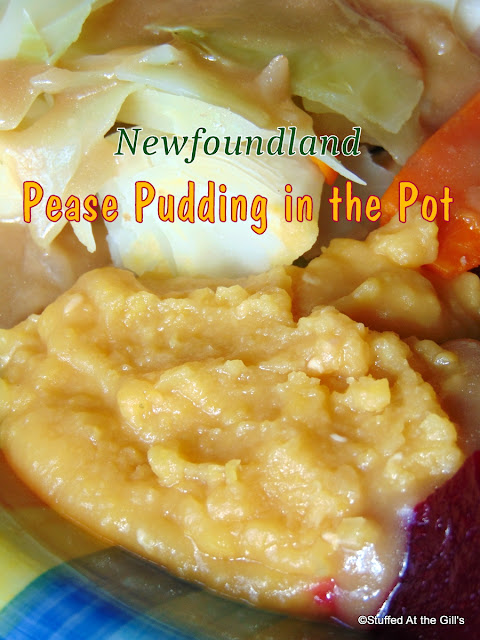Homemade Potato & Cheese Perogies
Perogies are a Canadian comfort food that made their way to the East Coast over the last fifteen years. At one time no one in Atlantic Canada would have known what these were unless they had lived in the western provinces and had eaten these tasty little potato filled dumplings. I was first introduced to Perogies when invited to a friend's home for dinner and they were on the menu. You can read all about that experience in the Perogy Casserole post.
Of course, now you can buy frozen perogies in just about any grocery store anywhere in Canada. While these are pretty good, nothing can beat the real thing. Homemade Perogies are not hard to make but they are time consuming but once in a while the real deal is worth the time and effort. We've been enjoying Homemade Perogies the last few days because I was making them for a church dinner. One must do a test batch, of course, so that means at least one or two meals and then there are the lop-sided ones and the rejects that taste as good but don't warrant a showing at the church table. (One must put one's best foot forward, or perogy in this case.)
The best and worst thing about perogies is that they are moreish and it's not hard to eat a dozen without even realizing it until they are gone. Well decorated with onions and sour cream, they slide right down the gullet without much effort. So good.
Perogies can be served as a main dish or as an appetizer. Here's my version of Homemade Perogies.
Potato & Cheese Perogies
1 cup water
¼ cup milk
2 tablespoons sour cream
1 tablespoon oil
1 egg
1 teaspoon salt
4½-5 cups flour
3 pounds pounds potatoes, russets are best
¼ cup butter
8 oz cheddar cheese, grated
Salt and pepper to taste
2 large onions, diced, or as many as you think you will eat
¼ cup butter
Sour cream
Bacon bits, optional
To make the perogy dough: Beat the water, milk, 2 tablespoons sour cream, oil and egg together. Add the salt. Mix in about 4 cups of flour until a sticky dough is formed. Turn out on well floured board or table and gently knead adding only enough flour to make a smooth dough. Place dough in a floured bowl and cover with plastic wrap or damp towel. Let rest at least one hour. Refrigerate if not using within an hour. This will help the dough relax and make it easier to roll out.
To make the filling: While the dough is resting make the potato and cheese filling. Peel and boil potatoes in lightly salted water until fork tender. Drain and mash hot potatoes adding the butter and grated cheese. Make sure you stir everything up from the bottom of the pan so there are no lumps of unmashed potatoes. Taste and add salt and pepper as desired. Cover and let cool to at least room temperature. Refrigerate if not using within an hour.
To roll and cut the dough: When the dough has rested, cut it in four quarters. Remove one quarter and cover the remaining dough in bowl. On a well floured surface roll the dough to about ⅛-inch thick. I found it easier to roll when I placed plastic wrap on top of the dough.
Cut out circles using a 2-inch floured biscuit cutter or the rim of a drinking glass. Remove any scraps of dough and place in the covered bowl with the rest of the dough. You will reroll the scraps to make more circles. Cover the circles with plastic wrap so they do not dry out while filling the perogies.
To fill the perogies: Take a heaping teaspoon of potato mixture and roll into a ball. Place the ball of potato filling in the middle of dough circle. Pull the dough up around the potato forming a crescent shape. Seal both edges of the dough together by crimping with your fingers. If the dough will not stick together brush a little water on the edge and crimp closed. Lay filled perogy on a floured surface and fill the remaining dough circles.
Repeat this process until all the dough and filling have been used. You may now cook your perogies or freeze them for a future meal. As this recipe makes 75-100 perogies you may want to eat some when you make them and freeze the remaining ones.
To freeze perogies: Lay the perogies in a single layer on a cookie sheet(s) and place in the freezer. When frozen transfer the perogies to a freezer bag and keep in the freezer until needed.
To cook the perogies, fresh or frozen: Fill a large pot three quarters full of water and bring to a boil. Add a teaspoon of salt. When the water is boiling add about 12 perogies at a time to the water. Once the water starts to boil again turn down the heat. You want to simmer the perogies until they float to the top of the water. Once they float they can be removed, drained and rinsed with cold water to keep them from sticking.
To serve and eat the perogies: Fry the diced onions in the butter until they just start to turn golden. The perogies can be eaten as is with a little melted butter, fried onions and sour cream. Or, if you prefer, the perogies may be fried in additional butter before eating. Many people enjoy fried perogies served with fried onions and sour cream.
Makes 75-100 perogies.
Beat the egg, sour cream, milk, oil and water together. Add the flour and salt and mix until a sticky dough has been formed. Turn out on a well floured surface and knead adding enough flour to make a smooth dough. Let the dough rest about an hour.
While the dough is resting make the potato and cheese filling. Boil potatoes in lightly salted water. Drain when cooked and mash adding the cheese and butter. Season with salt and pepper as needed. Mash until very smooth. Let cool until room temperature or refrigerate until needed.
Divide the dough into fourths and roll each section until about ⅛-inch thick. Cut out circles using a 2-inch floured biscuit cutter or the rim of a drinking glass. Reroll the scraps to make more dough circles.
To keep the dough circles from drying, cover with plastic wrap while filling with the potato and cheese mixture. Use a heaping teaspoon of filling for each perogy. Place the ball of filling in the middle of the dough and pull the sides of the dough together. You may have to push in any overflow of filling.
Crimp the edges together to make a water proof seal. If the edges won't stick together, brush a little water over the edges and squeeze together again.
When the perogies are filled you may cook them or freeze them. To freeze, place the perogies in a single layer on a cookie sheet and freeze. Place the frozen perogies in a freezer bag and place in the freezer.
Perogies may be served straight from the pot with a little butter but many people like them fried in butter before serving.
Fry up as many onions that you think you will eat. I love onions so I tend to fry up loads.
Perogies, crisp on the outside, soft and cheesy on the inside.


















Comments
Post a Comment